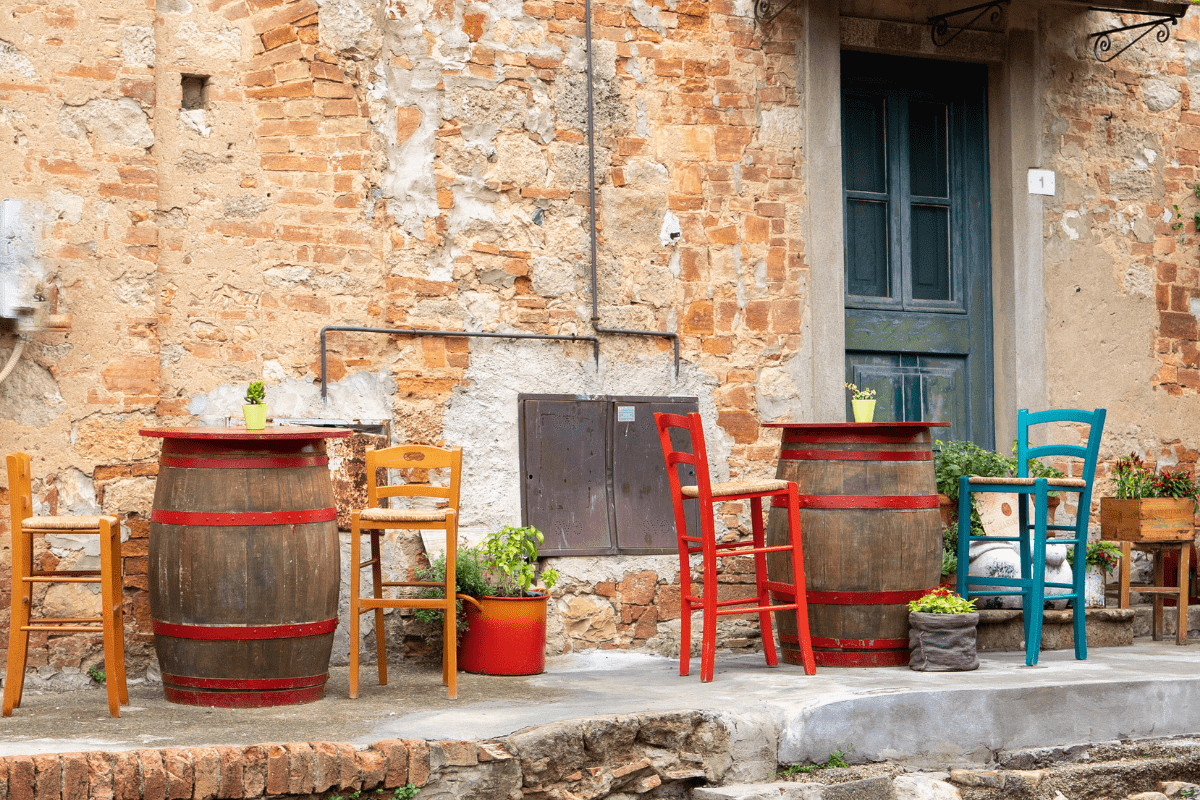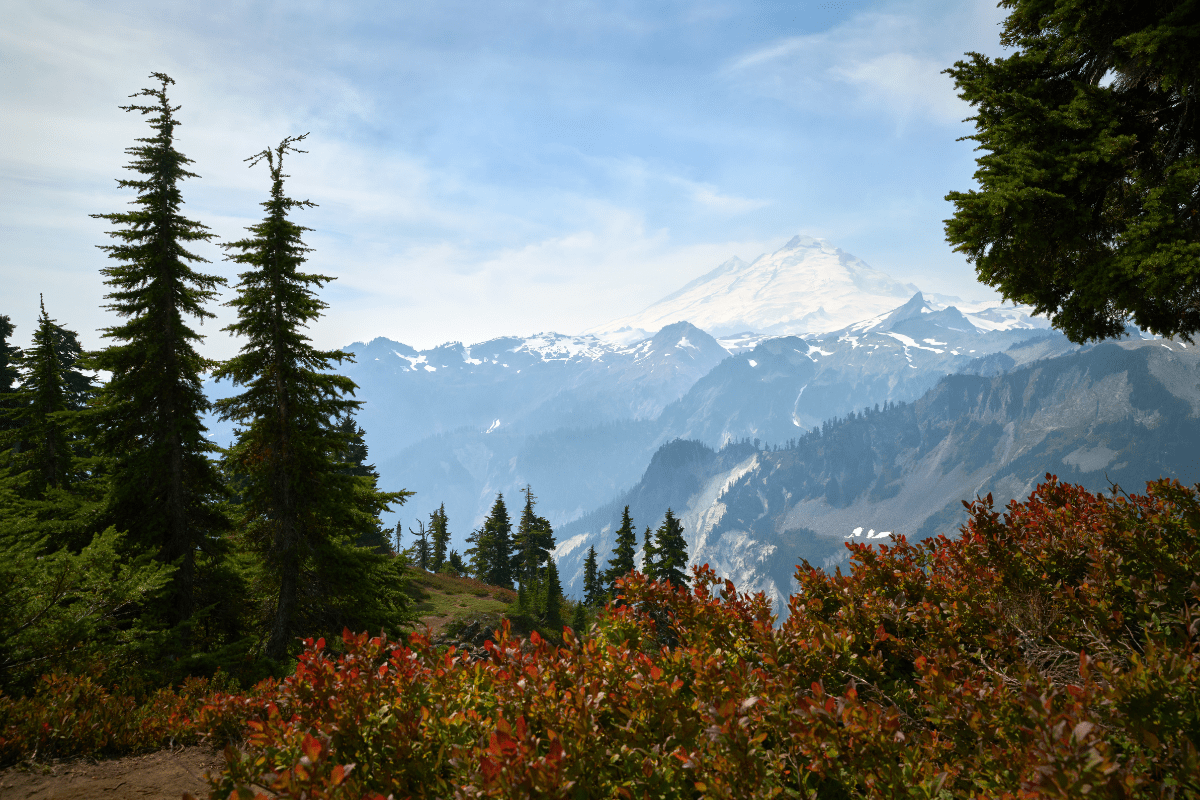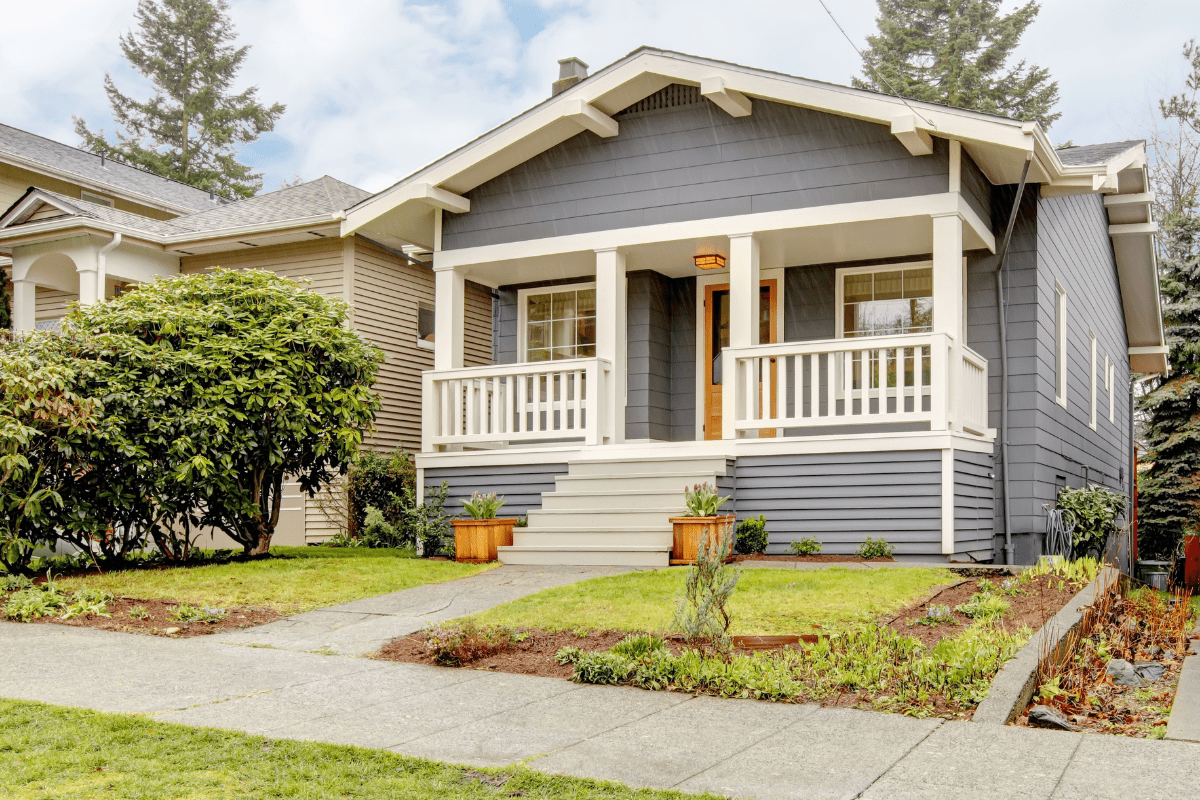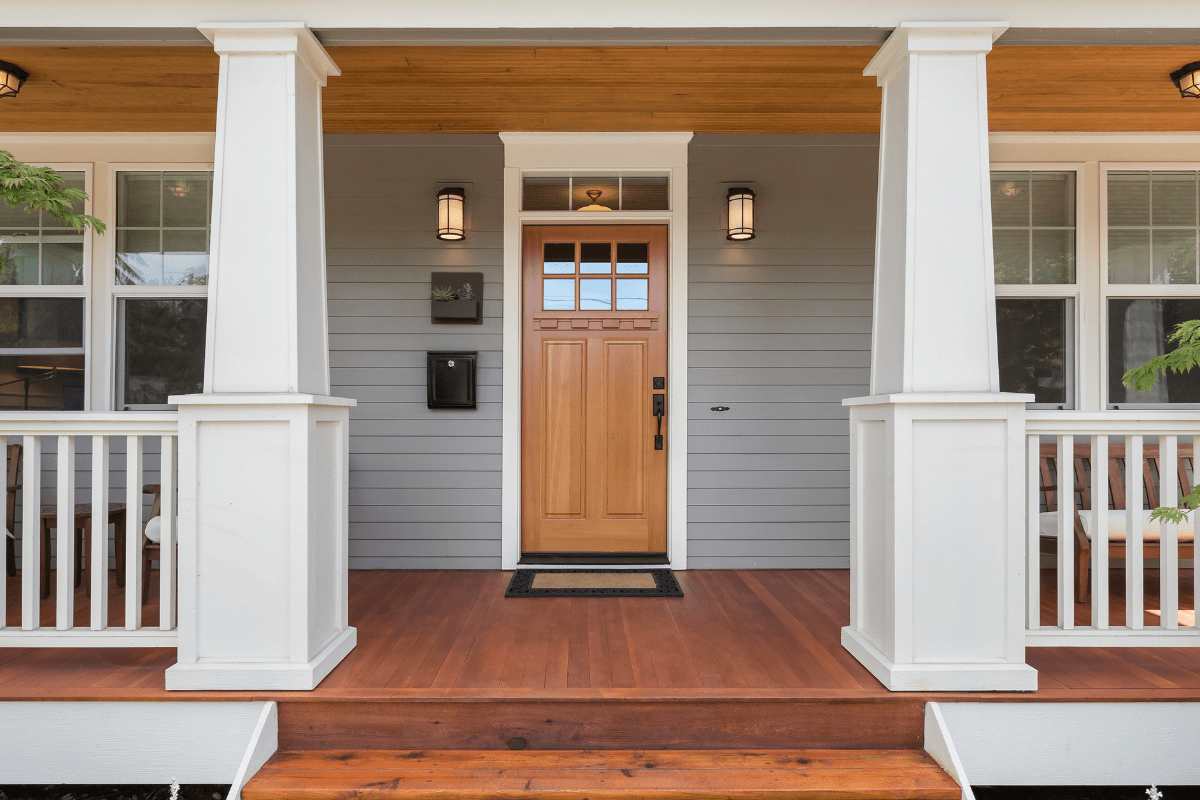While other states brag about their chain restaurants and franchise kingdoms, Washington quietly maintains nine culinary time capsules where the menus haven't heard of molecular gastronomy and the owners still remember when Microsoft was just "that new computer company." These restaurants have outlasted economic crashes, tech booms, and countless predictions of their demise, powered by pure Pacific Northwest stubbornness and really good pie.
The oldest of the old: Must-visit historic restaurants
Let's start with the granddaddy of them all, or should I say the great-great-great-granddaddy. These restaurants have seen Washington transform from frontier territory to tech hub, and somehow they're still here, still serving, still surprising visitors who can't believe that yes, this place really has been open since before your great-grandmother was born.
Horseshoe Cafe, Bellingham (1886)
The Horseshoe Cafe holds the crown as Washington's oldest continuously operating restaurant at 139 years old. Created during the Fraser Canyon Gold Rush to feed "tough, ornery folks" including miners, fishermen, and railroad workers, this Bellingham institution has survived through sheer stubbornness and community love.
The cafe once claimed to be America's oldest 24-hour restaurant, though they've since scaled back those round-the-clock hours. My favorite historical tidbit? They had a Robin Hood-like mascot called "Rowdy Buckaroo" who would secretly feed expired parking meters and leave notes saying "You've been rescued." Try explaining that marketing strategy to a modern consultant.
Today's signature dish, Belgian waffles topped with chicken fried chicken, might make cardiologists weep, but it perfectly captures the restaurant's evolution from frontier necessity to beloved community oddball. The place looks exactly like you'd expect a 139-year-old restaurant to look, complete with wood paneling that's probably witnessed more drama than a Netflix series.
Merchant's Cafe & Saloon, Seattle (1890)
Seattle's oldest continuously operating restaurant sits in Pioneer Square, where it's been serving drinks across the same 30-foot carved mahogany bar since 1890. That bar? It was shipped around Cape Horn in the 1860s, because apparently that's how you got fancy bar furniture before Amazon Prime.
During the Klondike Gold Rush, much gold passed across this bar as miners celebrated their fortunes or drowned their sorrows. When Prohibition hit, the clever owners kept things legal upstairs as a cafe and cigar shop while moving the fun stuff to a basement speakeasy, now Seattle's underground bar. The Schreiner family ran the place for 74 years until 1972, which is basically forever in restaurant years.
Walking into Merchant's Cafe feels like time travel, except the beer is cold and the food is actually good. The basement bar, with its brick walls and slightly spooky atmosphere, makes you wonder how many ghost stories the staff could tell… and yes, they claim it's haunted, because of course it is.
Virginia Inn, Seattle (1903)
The Virginia Inn predates Pike Place Market by four years, which in Seattle terms makes it practically prehistoric. Located in the Hotel Livingston building in what was once called Skid Road (yes, that's where the term "skid row" comes from), this survivor has reinvented itself more times than Madonna.
After barely surviving Prohibition and the Great Depression, the Virginia Inn got its groove back in 1981 as Seattle's first "art bar," featuring rotating exhibitions from local artists. Hollywood came calling in the 1990s, featuring the inn in both "Sleepless in Seattle" and "Singles," cementing its place in pop culture history alongside flannel shirts and coffee snobbery.
These days, they serve Northwest-focused French bistro cuisine, which is a fancy way of saying they put local salmon on everything and charge accordingly. But sitting in those worn leather booths, you can almost hear the echoes of a century of conversations, arguments, and terrible pickup lines.
Family dynasties: Multi-generational success stories
Some families pass down jewelry or property. These families pass down restaurants, along with secret recipes, regular customers, and the stubborn refusal to sell out to chain restaurants.
Three Girls Bakery, Seattle (1912)
Three Girls Bakery made history as the first business licensed to women in Seattle. When Mrs. Jones and her two female partners applied for a business license in 1912, the city clerk was apparently so shocked that he could only record them as "Mrs. Jones and two of her friends." This was just two years after Washington women won the right to vote, making these ladies true pioneers with pastries.
By 1919, they were cranking out 100,000 loaves daily across eight Seattle shops, proving that women could indeed run a business empire, thank you very much. The current owner, Jacob Levy, whose family has been part of Pike Place Market since the 1940s, continues the tradition at Three Girls Bakery with handmade rugelach and their famous meatloaf sandwiches that could double as weapons if thrown hard enough.
The bakery still occupies its original Pike Place Market location, where the line often snakes out the door. Pro tip: the meatloaf sandwich is worth the wait, and eating it while watching the fishmongers throw salmon is basically a Seattle requirement.
Golden Wheel Restaurant & Lotus Room, Yakima (1937)
For over 85 years, the Golden Wheel has been Yakima's longest continuously family-owned restaurant. Founded by Chinese-American immigrant On Chin in 1937, this establishment actually consists of two parts: the Golden Wheel dining room and the legendary Lotus Room lounge, where locals have been getting "Lotusized" for eight decades.
What does "Lotusized" mean? Well, let's just say the Lotus Room pours drinks that would make a Vegas bartender blush. The original 1930s red vinyl booths and vintage bar setup remain intact, because when something works for 85 years, you don't mess with it. Four generations of the Chin family have maintained ownership, serving traditional Chinese-American cuisine that tastes like what your grandparents thought was exotic in 1952.
Miner's Drive-In, Yakima (1948)
Lee Miner got the best 16th birthday present ever: his own restaurant. Founded in 1948 with just three employees (Ed, Irene, and birthday boy Lee), Miner's Drive-In has grown from selling 25-cent burgers to employing 80 people across two dining rooms.
Local legend claims McDonald's founders visited and were "inspired" by Miner's operations, though the lawyers probably prefer we call it parallel thinking. The signature Big Miner Burger "can easily feed two adults," following founder Ed Miner's philosophy of creating burgers that are "a meal on a bun." The restaurant celebrated its 75th anniversary in 2023, with the fourth generation of Miners now running the show.
Maritime and industrial heritage
Washington's location on the Pacific shaped its culinary identity, and these restaurants preserve that salty, working-class history.
Olympia Oyster House, Olympia (1924)
The Olympia Oyster House occupies a 166-year-old building that originally housed the Olympia Oyster Company starting in 1859. The structure transitioned from oyster processing plant to restaurant in 1924, maintaining a direct connection to Washington's pioneering shellfish industry.
During a 1932 visit by the USS Constitution, Olympia went full quirky and issued special "Oyster Money" tokens as legal tender, because apparently that's something you could do in the 1930s. Their motto, "The oysters you eat today slept last night at Oyster Bay," isn't just marketing… it's a promise of freshness that predates farm-to-table by about 90 years.
The native Olympia oyster, tiny but flavorful, was crucial to both Native American diets and early settler economies. Eating here connects you to literally thousands of years of Pacific Northwest culinary tradition, though thankfully the service is faster now.
The Spar, Tacoma (1926)
The Spar occupies a 1917 building with a reputation that precedes it. The site originally housed the Old Tacoma Saloon from 1884, which was so notorious for "rambunctious men" and "lawless nights of drinking and gambling" that the city literally condemned and demolished it. That's right, the building was too rowdy for 1880s Tacoma, which is saying something.
The Radonich Brothers rebuilt it as the David Building, somehow managing to operate legitimately through Prohibition before adding a lunch counter in 1926. Their signature "Chicken and Jos," locally raised chicken breaded and cooked in a Henny Penny broaster with quartered potatoes, has been the house specialty for over 50 years.
Today, The Spar serves as Old Town's gathering place, where regulars still argue about sports and politics over beers, just with slightly less knife fighting than the 1880s version.
Park Inn, Spokane (1932)
Eastern Washington's oldest continuously operating restaurant opened during the Great Depression, because apparently the Miner family thought, "You know what people need during economic collapse? A nice place to eat." The former Monroe St. Lumber Company storefront became Spokane's first pizzeria in the mid-1950s, bringing exotic Italian cuisine to the Inland Empire.
Located across from Providence Sacred Heart Medical Center, Park Inn has served generations of medical workers and families for over 90 years. The restaurant features a group of regulars known as the "Wax Museum" who occupy the same bar seats daily, presumably fossilizing in place. It's the kind of multigenerational meeting spot where, as locals say, "parents met, grandparents met," and probably a few restraining orders were violated.
Washington's unique culinary identity
Understanding these restaurants requires understanding what makes Pacific Northwest cuisine different from, well, everywhere else.
According to James Beard Award winner Maria Hines, "The Northwest is ingredient-driven cuisine. We don't have a gumbo or jambalaya." Instead of signature dishes, we have exceptional ingredients: "We have the largest species of mushrooms of anywhere else in the world… We're really close to our ag community."
Chef Renee Erickson adds that geography shapes everything: "We're right on the water, we're not a river town, we're the Sound. And the sea is so different. And, culturally, I think it makes a difference." This connection to water, forest, and farm defines every historic restaurant's menu.
Most importantly, culinary historian Heather Arndt Anderson notes that "foods the Northwest is known for, salmon, berries and hazelnuts, are the same foods that sustained people here 10,000 years ago." These historic restaurants bridge ancient traditions and modern dining, even if they're serving chicken fried chicken on waffles.
Preservation challenges and why we should care
Here's the sobering reality: keeping these places alive requires more than nostalgia and Instagram posts.
Building codes present "formidable challenges" to rehabilitation projects. Restaurants must balance:
- Accessibility requirements
- Energy efficiency standards
- Modern safety codes
- Historic character preservation
- Operating costs that would terrify modern investors
The statistics tell the story. While the average restaurant survives just 72.5 months, and those with five or fewer employees typically last only 3.75 years, these historic restaurants have endured 85 to 139 years. Less than 1% of Seattle and Spokane's total land area holds historic designation, leaving most establishments vulnerable to development pressure.
Stephanie Meeks, president of the National Trust for Historic Preservation, argues we don't honor historic buildings by "trapping structures in amber" but by ensuring "they continue to play a vibrant role at the heart of the community." The National Trust's "Backing Historic Small Restaurants" program specifically supports establishments that contribute to community history and identity.
Planning your historic restaurant road trip
Ready to eat your way through Washington history? Here's how to make the most of your culinary time travel.
Start with geographic clusters to maximize your historical dining per gallon:
Seattle Circuit:
- Morning: Three Girls Bakery breakfast sandwich
- Lunch: Merchant's Cafe underground bar
- Dinner: Virginia Inn art and appetizers
- Bonus: Pike Place Market wandering
South Sound Expedition:
- Olympia Oyster House for lunch
- The Spar for dinner and drinks
- Explore Olympia between meals
Eastern Washington Adventure:
- Yakima: Golden Wheel lunch, Miner's Drive-In dinner
- Spokane: Park Inn pizza pilgrimage
- Wine tasting because you're already there
Best practices for historic restaurant visits? Avoid peak hours if you want to actually see the historical details rather than someone's back. Order the signature dishes that have been served for decades, even if they sound weird. Document the architectural features, not just your food. And please, leave reviews and buy merchandise… these places need support beyond your $15 burger purchase.
The bottom line
These nine restaurants, spanning from 1886 to 1948, represent multiple immigrant communities, countless family stories, and the stubborn refusal to give up when everything says you should. They're more than Instagram backdrops or quirky date spots, though they're certainly both. They're active participants in Washington's ongoing story, places where history isn't something you read about but something you taste, preferably with a side of Jo's potatoes.
Will they survive another century? That depends on whether we value them enough to deal with slower service, creaky floors, and menus that haven't discovered avocado toast. Visit them not because they're perfect, but because they're perfectly imperfect, wonderfully weird, and absolutely irreplaceable. These restaurants don't just serve food; they serve connections to everyone who sat in these seats before us, ordered these same dishes, and wondered what the future would bring.
So go ahead, get Lotusized at the Golden Wheel, order that heart-stopping waffle at the Horseshoe, or sit at Merchant's haunted bar. You're not just having dinner… you're keeping history alive, one bite at a time.





